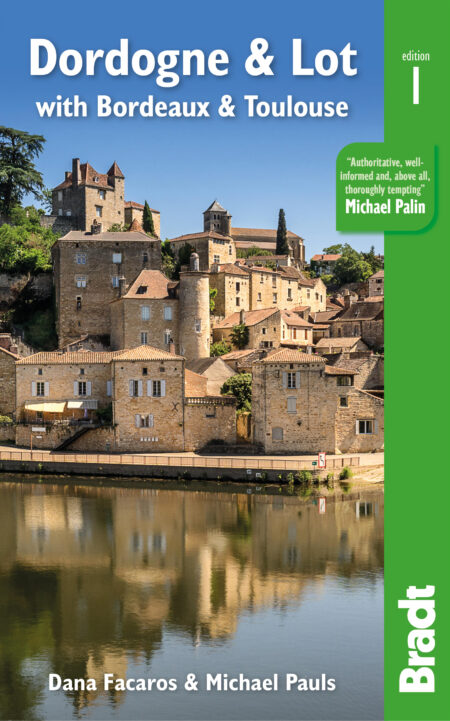Boasting classical French architecture, gorgeous gardens and stunning interiors, Dordogne’s châteaux are like something from a fairytale. Here are our favourites of the bunch.
Château de Beynac
One of most powerful castles in the region, Beynac looms 1115m over the Dordogne. Barons of Périgord, the Beynacs were every bit as daunting and fierce as their castle. In 1214 Simon de Montfort attacked Beynac and its baron for being a devoted friend of the Cathar-friendly Count Raymond VI of Toulouse. Although de Montfort spared Satan’s Bow when King Philippe Auguste personally intervened, he destroyed the château’s most imposing towers.
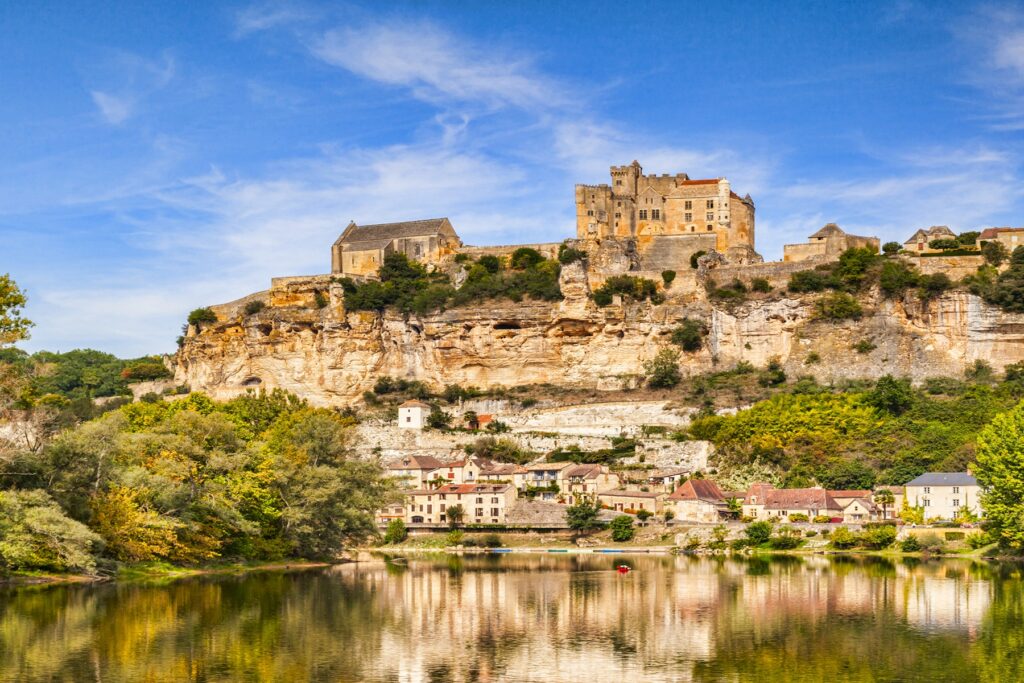
The interior of the castle has also been through numerous transformations: there’s a monumental 17th-century stairway, a Grand Siècle salon with a sculpted wooden chimney carved with mythologies, a Sacrifice of Isaac done with provincial panache, and late 15th-century frescoes in the Oratory (which, stylistically, are only about 400 years behind Tuscany) of the Last Supper, the Pietà and the Man of Sorrows. In the Last Supper, note the rare portrayal of the occasion’s maître d’ – St Martial, the apostle of Aquitaine.
Château de Castelnaud
Opposite Beynac, the powerful hulk of its eternal nemesis, Castelnaud stands undaunted on the limestone cliffs. First mentioned in 1214, when its Cathar lord was chased out by Simon de Montfort, Castelnaud’s rulers, the Caumonts, stuck with the English during the Hundred Years’ War and let them use it as a base from which to terrorise the surrounding countryside.
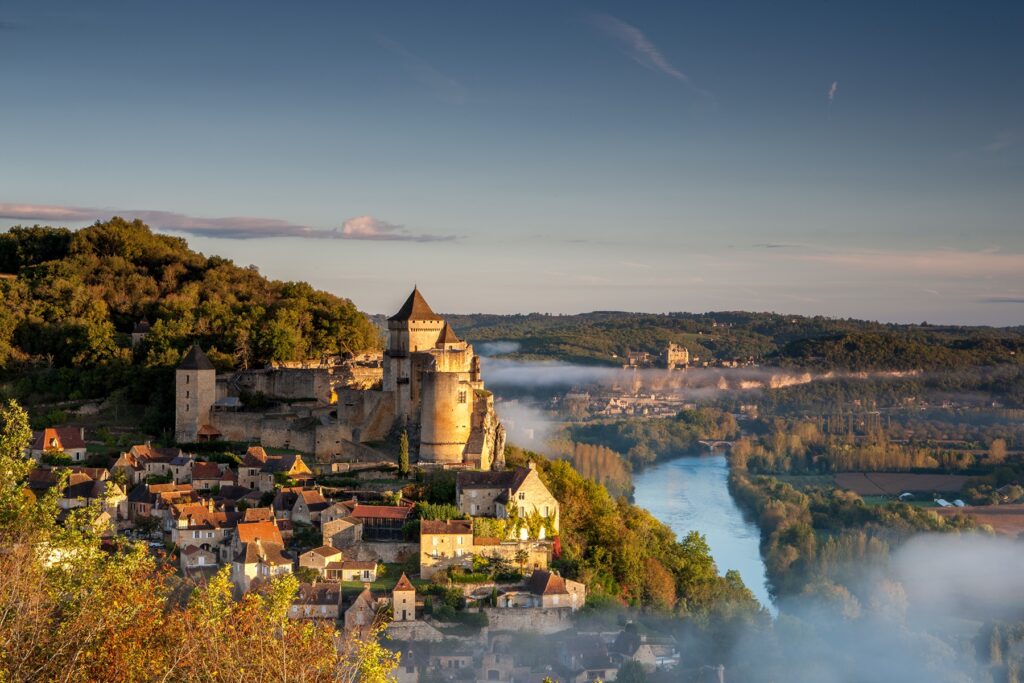
Abandoned after the Revolution, the castle is rather appropriately once again full of catapults, swords and crossbows. There are films on medieval warfare, and in summer they shoot off the trebuchets. Below the castle, the Éco Musée de la Noix occupies an 18th-century farm amid 7ha of walnut groves, where you learn about the nutty side of Périgord Noir, and dine on walnut dishes in the little restaurant.
Château Les Milandes
A wooded road from Castelnaud follows the river past the 14th–17th-century Château de Fayrac to this Renaissance beauty built by François de Caumont for his bride. In the 1930s, while Josephine Baker was on holiday in the Dordogne, Les Milandes cast a spell on her almost as powerful as the spell she had cast over Paris with her joyful, exuberant versions of the Charleston and Black Bottom. She purchased Les Milandes in 1946.
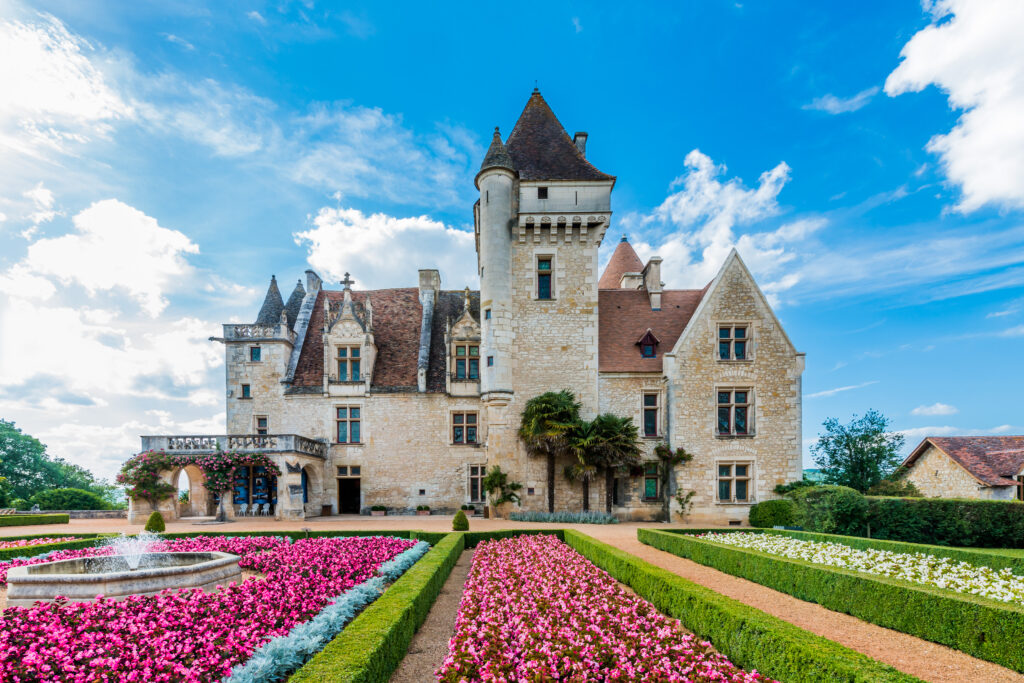
Today Les Milandes is a wonderful shrine to Josephine Baker’s memory, filled with her glamorous costumes and her famous skirt of upturned bananas; there are hundreds of photos, posters, recordings of her songs and films of her extraordinary dance moves. But there are also displays on her work in the Resistance that won her the Légion d’Honneur in 1961, and her work in the American civil rights movement, when she was the only woman to speak at Martin Luther King’s March on Washington in 1963. Admission includes the beautiful gardens, and in season a demonstration of falconry, complete with a mechanical rabbit and ferret.
Château de Biron
You can see this mighty bruiser of a castle long before you get anywhere near it. The steep isolated hill was a natural stronghold, and saw its first fort in the 11th century to command the northern approaches to the Agenais. Over the centuries more and more were added to the pile, creating one of the most eclectic castles in France.
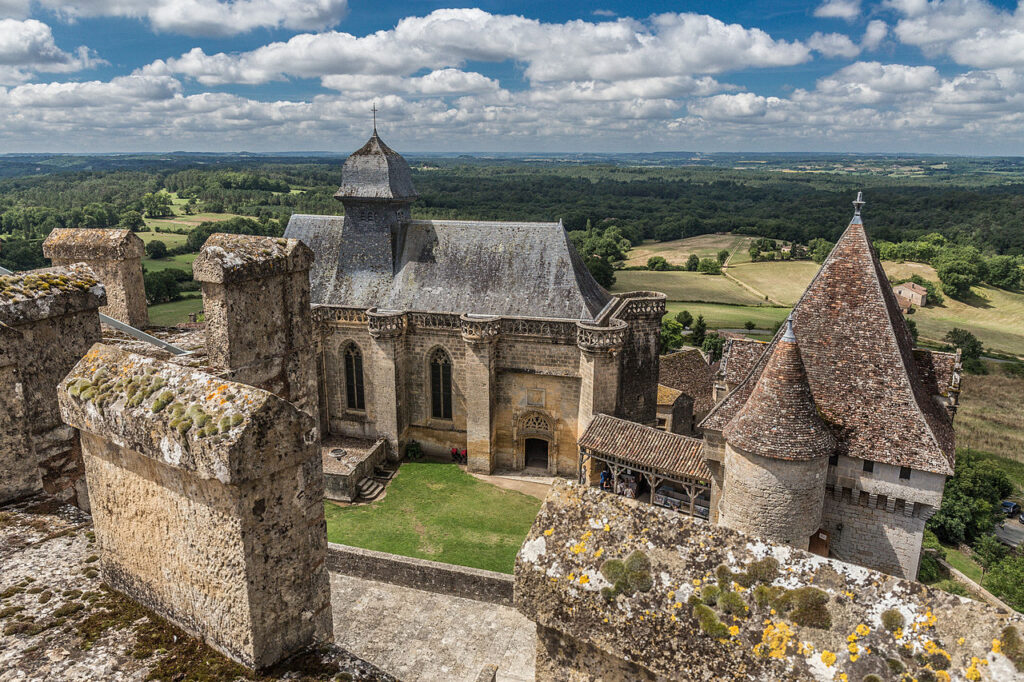
The first baron of Biron built the square 12th-century keep, or Tour Anglaise, while Romanesque walls and the Tour du Concierge (with Renaissance dormers) date after the siege in 1212 by Simon de Montfort. The next important building spree was initiated by Pons de Gontaut-Biron in 1497. Pons returned to Biron determined to add some quattrocento glamour with the delicate Pavillon de la Recette and a two-storey chapel – the ground floor was a parish church for the village, and the upstairs reserved for the nabobs.
Château de Bourdeilles
Seat of the oldest of Périgord’s four baronies, Bourdeilles is so old that the first barons lived in fairy-tale times, when they slew griffins and transported themselves to Jerusalem and back by means of an ointment extracted from a dragon’s ear. As time went on, their castle found itself on the frontier between English Guyenne and France, in a commanding position over the river.
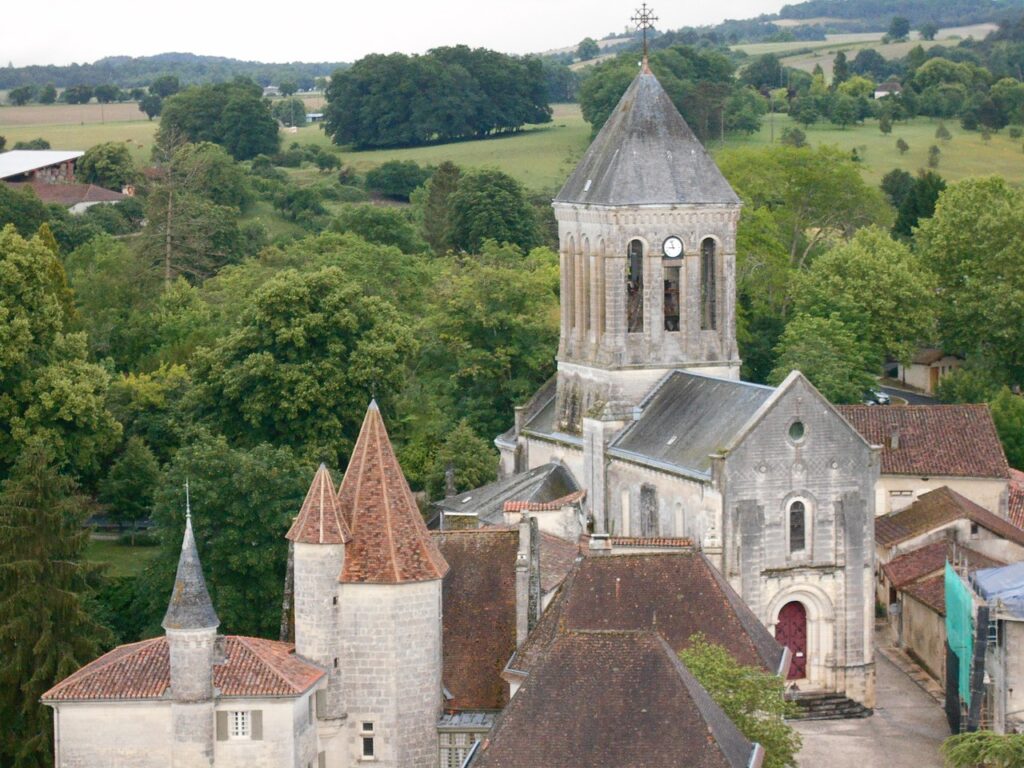
Today, the tour includes both the keep with its 2.5m-thick walls, and views that make the slog up worthwhile, as well as the château. Its armoury is full of decorative weapons and rooms richly decorated with 16th- and 17th-century furniture from Spain and Burgundy, including a 16th-century German Dormition of the Virgin, the Burgundian tomb of Jean de Chabannes, a tapestry showing François Ier, with his falconers, and a gilt Spanish bed fit for a king – in fact the bed of François’s arch-rival, the megalomanic emperor Charles V.
Château de Bridoire
A beautiful château, rebuilt after it was destroyed in the Wars of Religion, Bridoire was purchased in 1987 by the infamous Emperor Bokassa of the Central African Republic, then left in a lamentable state of dereliction.
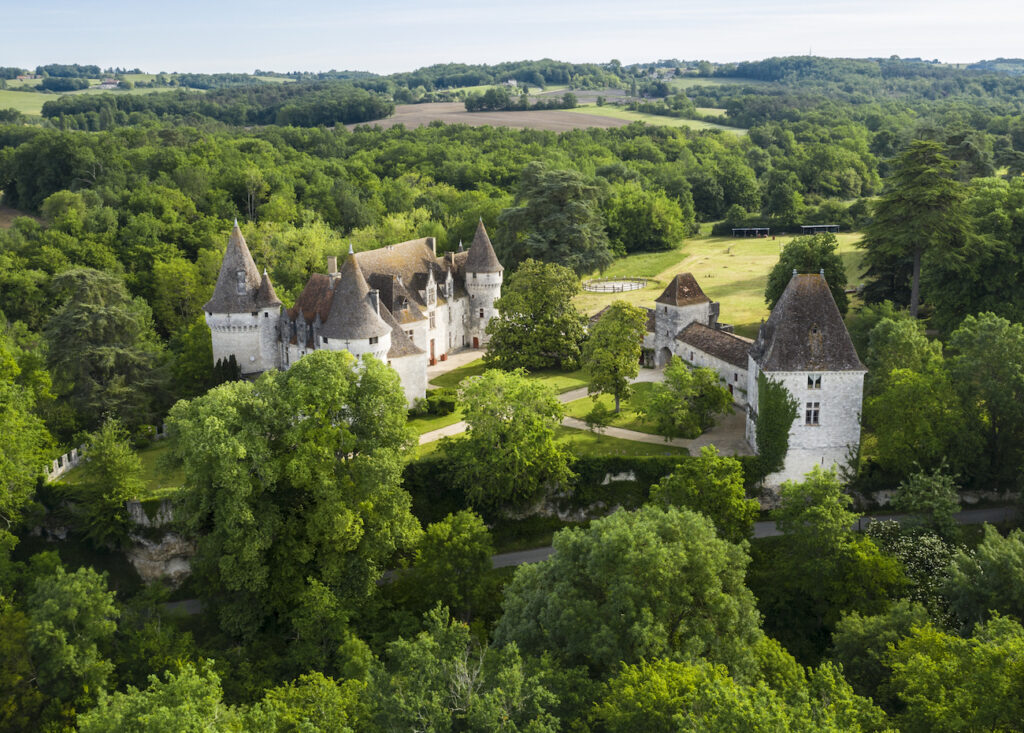
Now restored, visitors to this picturesque location can play medieval games, following clues through a natural labyrinth. For those after a slightly spookier experience, Château de Bridoire also offers haunted house evenings – check the website for more details.
Château de Hautefort
This famous citadel high over the Auvézère was the fief of the Lastours, whose baron Gouffier de Lastours fought in the First Crusade alongside Godefroy de Bouillon. In the early 1600s the castle was rebuilt as a palace in the Loire style by François de Hautefort, first Marquess of Hautefort in 1614.
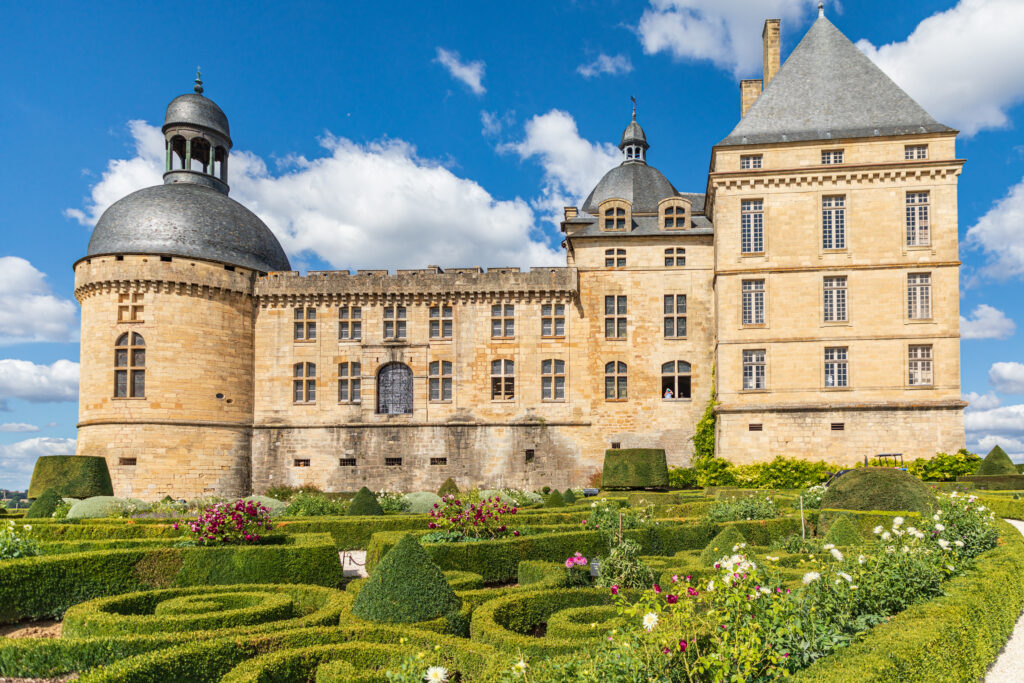
Although it survived the Revolution (as a prison), Hautefort was derelict in 1929, when the Baron and Baronne de Bastard undertook its restoration, finally finishing it in 1968. In the autumn of that same year Hautefort went up in a blaze that could be seen across half of Périgord. But after the shock of losing 39 years of work in one night, the now widowed baroness amazed everyone by simply starting all over again, completing the work by the time she died in 1999. Besides the château, the visit includes the panoramic terraces and the immaculate French gardens, the park, and vegetable garden of heritage vegetables; seeds are for sale in the shop.
Château de Puyguilhem
The region of Périgord claims to have 1,001 châteaux; of that number, the most splendid is arguably this Renaissance jewel. Built in 1524 by the first president of the Parlement of Bordeaux, Mondot de la Marthonie, its roof-line forest of richly carved dormers and chimneys is just as impressive when viewed from within – it looks like the hull of a ship.
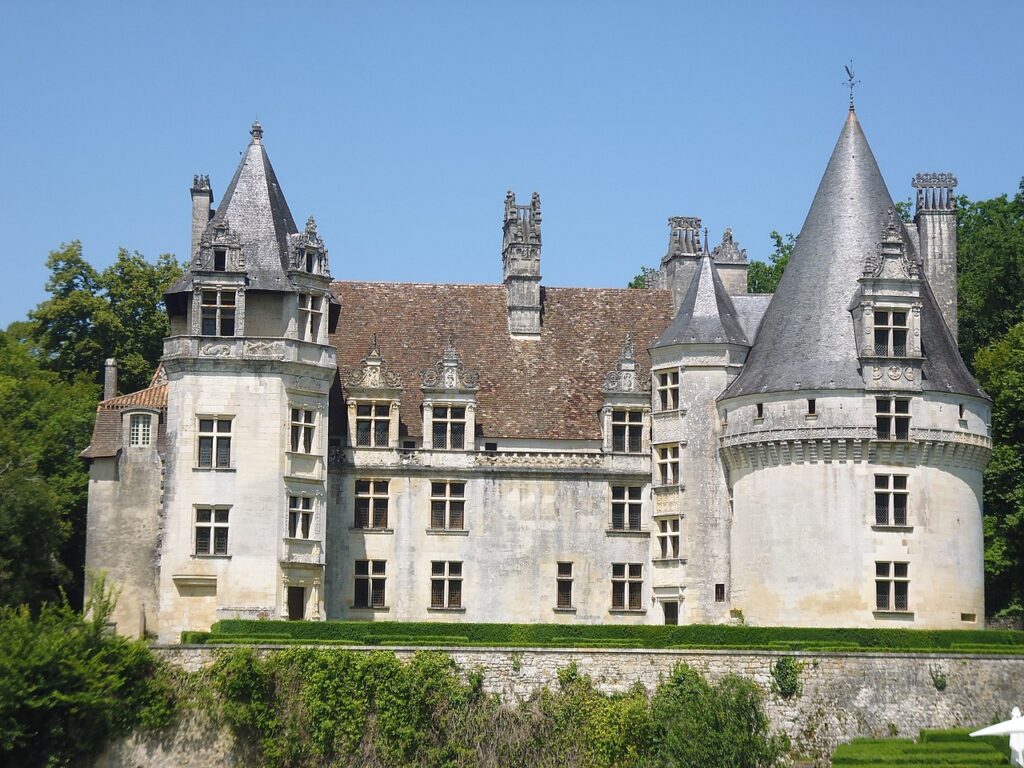
Saved from collapse in the 1930s, Puyguilhem has been refurnished with period pieces and Renaissance tapestries; the star is the chimney, sculpted with the Labours of Hercules.
Château de Commarque
Just beyond Cap Blanc up the Grand Beune valley rise the majestic, romantic ruins of the 12th–13th-century castle betrayed to and ruined by the English in the Hundred Years’ War; the elegant keep was added in the 16th century. After 400 years of abandonment a descendant of the original builders purchased the castle and opened it to visits. It’s a 500m walk from the car park through the woods. Every year it hosts new activities.
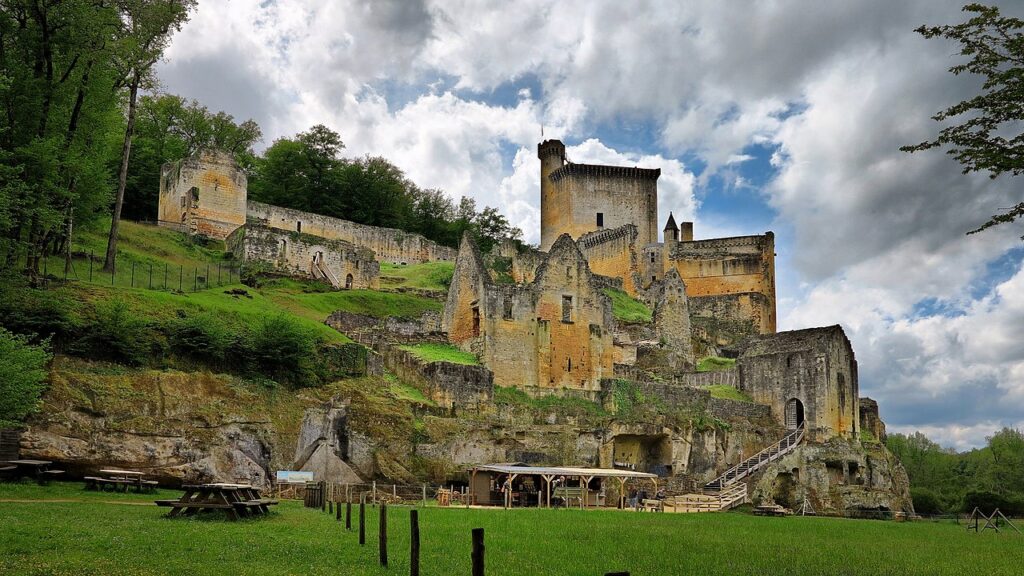
On the cliff opposite, Château de Laussel (private) sits over the Gisement de Laussel, which produced the famous relief of the Vénus de Laussel, holding her bison horn (now in Bordeaux).
Of course, chateaux are not the only things that France is famous for. Read more about what you can see in this fascinating country below.
More information
For more information, check out our guide to Dordogne & Lot:
